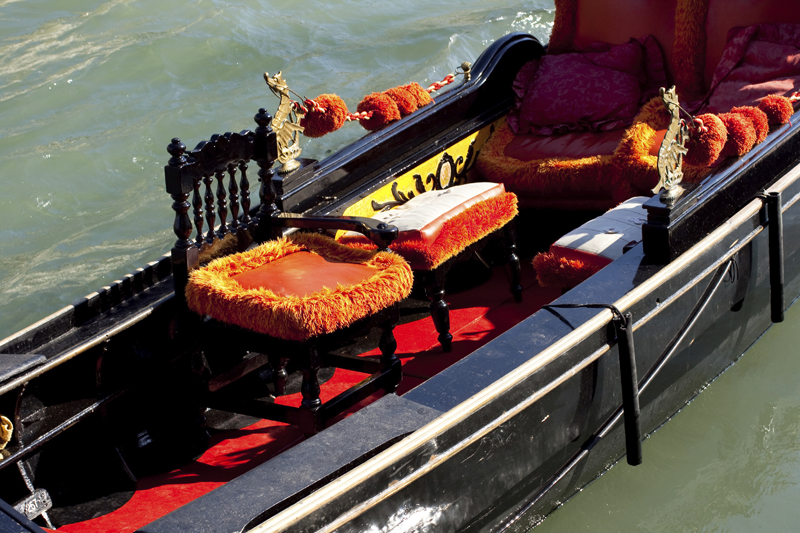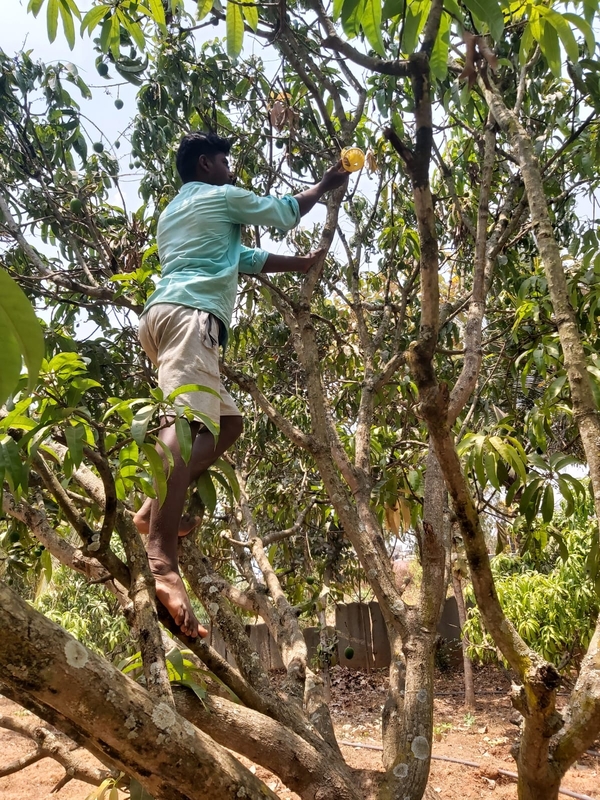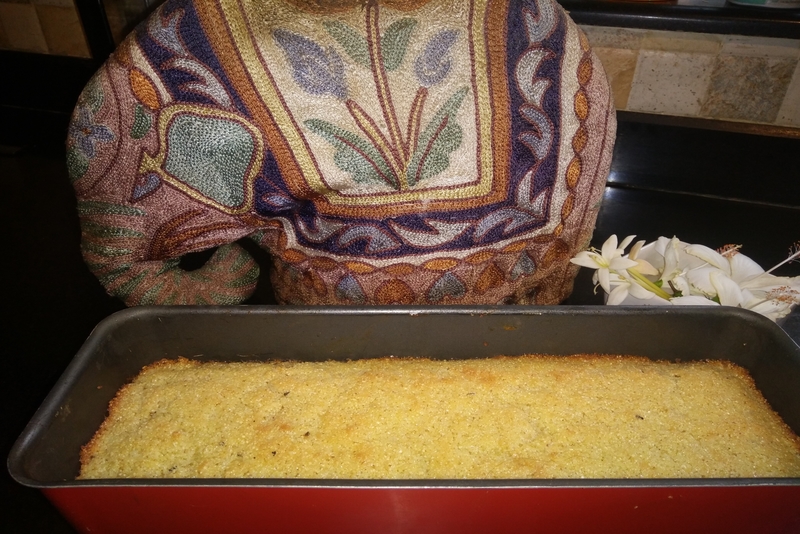Santorini, close to the mainland of Greece

Santorini, Santorini, the name echoed in our ears and we were told, it's worth a visit. Close to the mainland of Greece, Santorini, pronounced sadoˈrini, is an island in the southern Aegean Sea. The city is situated on the remains of a volcanic caldera, after an enormous volcanic explosion that destroyed the earliest settlements on a formerly single island, and created the current caldera.
Sitting in our ferry bobbing up and down with the movement of the waves, Santorini in the distance looked like a huge chocolate brownie topped with a great big dollop of vanilla ice-cream. Clinging atop a rugged cliff, the whitewashed town of Fira happily looks upon its visitors coming into her folds through the sea route. We are among the group of awestruck visitors, to Santorini, supposed to offer the best view of the sunset. Visitors to the towns on top of the hill can either walk or take buses or cars up. It’s 5 p.m. and we are hoping to make it before it got dark. Luckily, the sun did not set until 7 p.m. Twenty minutes later we reached Fira, the capital of Santorini. It’s a wonder that something this gorgeous came about as a result of a volcanic explosion.
In a bit, our cab stopped near a cobbled street going up. No vehicle can go beyond that point as the road becomes too narrow for vehicles to ply. Lugging our bags we walked along a slender street before the owner of our hotel run up to personally welcome us. We follow him, through a white gate, past a narrow corridor of another resort, past an open balcony, down a steep flight of steps, onto an open terrace. Most of the hotels in this part are built this way and everything is interconnected — pass through one gate and a flight of steps and you are in the next property.
The hotel is a charming boutique property that has only eight rooms, each done up differently with the open area in front giving the most breathtaking view of the sea, caldera and the town. There’s a hot tub strategically placed at the edge of the white fenced terrace where we decide to spend the rest of the evening, sipping on ouzo (the local drink). As the sun begins its descent, the sky magically transforms into a shade of pink bathing everything in its luminescence.
Some tourists are so excited by the scene, that they clap, hug, kiss and click endless pictures. It’s a mildly warm evening, and after changing we set out to explore the area around. There are shops selling fancy clothes and shoes, grocery, books, memorabilia, dried and painted starfish, and the odd cafe. A blue domed church at the end of the road is tough about letting people in semi-dressed like most tourists are.
We aren’t lucky as one needs to be in full sleeves and covered up to the ankle, we are told. We return and walk in the other direction, which has tavernas slowly filling up. After an elaborate dinner, we decide it's time to turn in for the night.
Taking a local bus to the shopping area, the next morning, we wander around boosting the local economy picking up bric-a-brac. We then head to the red beach. A drive through a barren road takes you to the beach, which is rather crowded. It’s the perfect place for photography. The crashing blue waves against the red sand and imposing red cliff in the background is quite a view. We laze about till it gets too sunny and then decide to drive to Perissa, the black beach.
The wet glimmering black sand looks inviting. As we walk through it, we realise the crunchy sand acts as a natural cleansing agent and our feet look as if they had just undergone a pedicure. After walking in the frothy cool waters, we sit under one of the many thatched umbrellas and fasten our teeth to what we picked up from the shacks lining this beach. In addition, there’s great music blaring out of the shacks which you can sit on the sands and enjoy.
Sure you could join in the carnival like atmosphere and dance with abandon with the others there or head to a quieter part of the beach and enjoy the calm. After a while we walk back to the hotel, and settle on the couches outside with fresh Greek yoghurt, olives, slices of fresh cheese and ham.
The weather suddenly changes in a flash. The bright sun is lost and obliterated by dark angry clouds. There’s a storm brewing and the wild wind blows away clothes, tables and chairs… even the cheese and salami from my plate. Thick clouds float over the sea and the cruise ship in the sea slowly seems to inch towards the shore.
Everything turns gray and gloomy at once. “Is the apocalypse near?” I ask a little nervous. One of the locals laughs, “Don’t worry. This is normal in Santorini,- one moment there is hot sun and the next -- rain.”
She then disappears, shaking her head and shouting instructions in Greek to the waiters scurrying around . The temperature drops steeply. Out in a flash, come our jackets. Armed with heavy coats and warm coffee mugs, we look into the far expanse of the grey sea.
This is a view you cannot forget easily and the memory stays burned across my mind, long after I have left Santorini.
Sitting in our ferry bobbing up and down with the movement of the waves, Santorini in the distance looked like a huge chocolate brownie topped with a great big dollop of vanilla ice-cream. Clinging atop a rugged cliff, the whitewashed town of Fira happily looks upon its visitors coming into her folds through the sea route. We are among the group of awestruck visitors, to Santorini, supposed to offer the best view of the sunset. Visitors to the towns on top of the hill can either walk or take buses or cars up. It’s 5 p.m. and we are hoping to make it before it got dark. Luckily, the sun did not set until 7 p.m. Twenty minutes later we reached Fira, the capital of Santorini. It’s a wonder that something this gorgeous came about as a result of a volcanic explosion.
In a bit, our cab stopped near a cobbled street going up. No vehicle can go beyond that point as the road becomes too narrow for vehicles to ply. Lugging our bags we walked along a slender street before the owner of our hotel run up to personally welcome us. We follow him, through a white gate, past a narrow corridor of another resort, past an open balcony, down a steep flight of steps, onto an open terrace. Most of the hotels in this part are built this way and everything is interconnected — pass through one gate and a flight of steps and you are in the next property.
The hotel is a charming boutique property that has only eight rooms, each done up differently with the open area in front giving the most breathtaking view of the sea, caldera and the town. There’s a hot tub strategically placed at the edge of the white fenced terrace where we decide to spend the rest of the evening, sipping on ouzo (the local drink). As the sun begins its descent, the sky magically transforms into a shade of pink bathing everything in its luminescence.
Some tourists are so excited by the scene, that they clap, hug, kiss and click endless pictures. It’s a mildly warm evening, and after changing we set out to explore the area around. There are shops selling fancy clothes and shoes, grocery, books, memorabilia, dried and painted starfish, and the odd cafe. A blue domed church at the end of the road is tough about letting people in semi-dressed like most tourists are.
We aren’t lucky as one needs to be in full sleeves and covered up to the ankle, we are told. We return and walk in the other direction, which has tavernas slowly filling up. After an elaborate dinner, we decide it's time to turn in for the night.
Taking a local bus to the shopping area, the next morning, we wander around boosting the local economy picking up bric-a-brac. We then head to the red beach. A drive through a barren road takes you to the beach, which is rather crowded. It’s the perfect place for photography. The crashing blue waves against the red sand and imposing red cliff in the background is quite a view. We laze about till it gets too sunny and then decide to drive to Perissa, the black beach.
The wet glimmering black sand looks inviting. As we walk through it, we realise the crunchy sand acts as a natural cleansing agent and our feet look as if they had just undergone a pedicure. After walking in the frothy cool waters, we sit under one of the many thatched umbrellas and fasten our teeth to what we picked up from the shacks lining this beach. In addition, there’s great music blaring out of the shacks which you can sit on the sands and enjoy.
Sure you could join in the carnival like atmosphere and dance with abandon with the others there or head to a quieter part of the beach and enjoy the calm. After a while we walk back to the hotel, and settle on the couches outside with fresh Greek yoghurt, olives, slices of fresh cheese and ham.
The weather suddenly changes in a flash. The bright sun is lost and obliterated by dark angry clouds. There’s a storm brewing and the wild wind blows away clothes, tables and chairs… even the cheese and salami from my plate. Thick clouds float over the sea and the cruise ship in the sea slowly seems to inch towards the shore.
Everything turns gray and gloomy at once. “Is the apocalypse near?” I ask a little nervous. One of the locals laughs, “Don’t worry. This is normal in Santorini,- one moment there is hot sun and the next -- rain.”
She then disappears, shaking her head and shouting instructions in Greek to the waiters scurrying around . The temperature drops steeply. Out in a flash, come our jackets. Armed with heavy coats and warm coffee mugs, we look into the far expanse of the grey sea.
This is a view you cannot forget easily and the memory stays burned across my mind, long after I have left Santorini.

Related Articles
Editor's Picks Articles
Top Ten Articles
Previous Features
Site Map
Content copyright © 2023 by Marianne de Nazareth. All rights reserved.
This content was written by Marianne de Nazareth. If you wish to use this content in any manner, you need written permission. Contact Marianne de Nazareth for details.





 -resizeimage.jpg.jpg)

